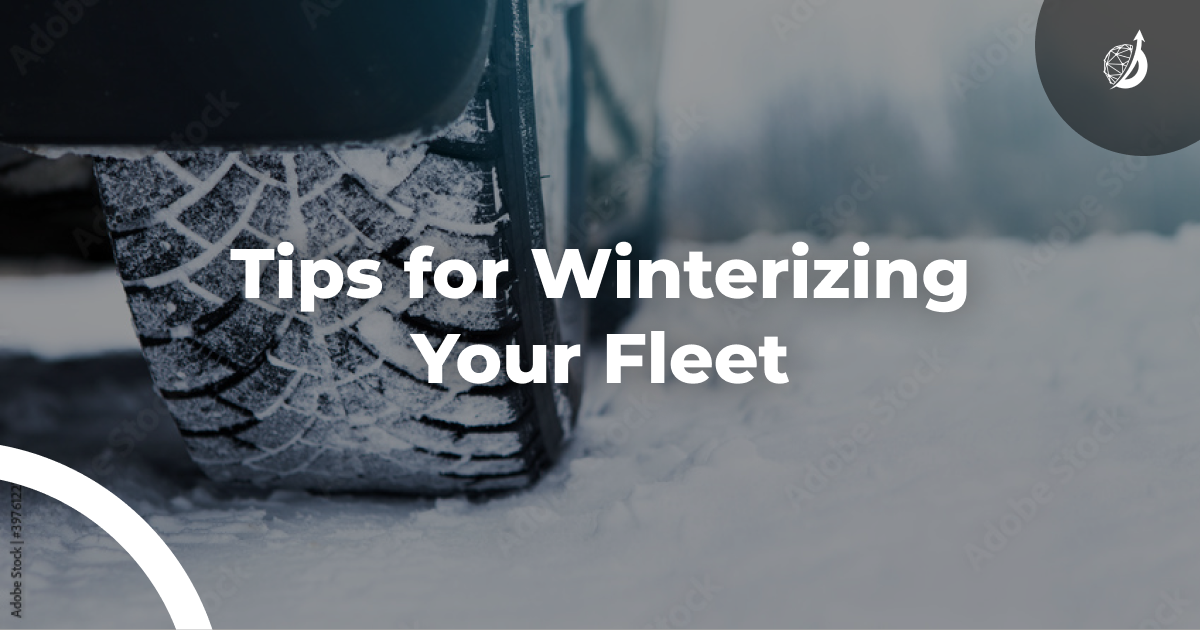Our Guide to Winterizing Your Vehicles in 2024

How to Winterize Your Fleet for Enhanced Safety and Performance in 2024
As the winter season approaches, fleets across North America face the annual challenge of ensuring vehicles are safe, reliable, and ready for the harsh conditions ahead. Winterizing your fleet isn’t just about checking off a few boxes; it’s about implementing a comprehensive strategy to reduce risks, minimize breakdowns, and enhance the safety of drivers on icy roads. Here’s a guide on what fleet managers can focus on to prepare for the next few months.
- Prioritize Battery Health with Cold-Weather Resilience Checks
One of the most common causes of winter breakdowns is battery failure. Cold weather is hard on batteries, reducing their efficiency and increasing the risk of sudden failures. Ahead of this season, ensure that all fleet batteries are thoroughly tested for charge capacity, with replacements for any that are approaching the end of their lifespan. For 2024, consider batteries with higher cold-cranking amps (CCA) to better handle low temperatures.
- Optimize Engine Efficiency with Seasonal Maintenance
Engines require particular care in cold weather. This year, go beyond basic maintenance and include cold-specific adjustments:
– Use winter-grade oil: Thinner oil can help maintain proper lubrication even in freezing temperatures.
– Check the coolant system: Ensure coolant levels and antifreeze mixtures are appropriate for the forecasted temperatures in your operating regions.
– Block heaters: In areas prone to sub-zero temperatures, equipping vehicles with engine block heaters can facilitate easier starts and reduce wear.
- Update Tire Strategies with a Focus on Winter Conditions
For 2024, icy conditions may be more prevalent due to anticipated weather patterns. Equipping vehicles with winter or all-weather tires can significantly reduce skidding risks. Consider the following updates:
– Install snow-rated tires on vehicles operating in snow-prone areas.
– Regularly check tread depth and tire pressure, as both decrease in the cold.
– In regions with severe winter conditions, having chains in your vehicle can be a lifesaver.
- Enhance Visibility with Lighting and Windshield Care
Visibility is often compromised in winter due to shorter days and adverse weather conditions. Here’s how you can boost visibility:
– Replace wiper blades with winter-ready options that prevent ice buildup.
– Use winter-grade windshield washer fluid to prevent freezing.
– Ensure any windshield cracks and chips have been repaired.
– Inspect and upgrade vehicle lighting to improve visibility for drivers and other vehicles.
LED lights are a reliable choice for winter driving due to their brightness and energy efficiency.
- Conduct Emergency Training and Equip Vehicles with Winter Essentials
This winter, preparation for emergencies will be key to fleet safety. Equip each vehicle with a winter emergency kit, including items such as:
– Blankets, water, non-perishable food, flashlights, and extra batteries.
– Tire repair kits, jumper cables, air compressors, and portable chargers.
– Reflectors or flares to increase visibility in case of roadside emergencies.
Refreshed training for drivers on winter-specific driving techniques is invaluable. Reinforce the importance of slower speeds, greater following distances, and gradual maneuvers on icy roads.
- Implement Real-Time Monitoring and Preventative Maintenance Checks
Real-time vehicle monitoring is an advanced step that can help fleet managers oversee vehicle health and driver safety. Using GPS and fleet management systems, keep an eye on factors like engine temperature, battery health, and location. By integrating predictive maintenance with these systems, fleet managers can identify potential issues before they lead to costly breakdowns.
Winterizing your fleet is not just a one-time task; it’s an ongoing commitment to safety and reliability. By focusing on these targeted strategies and staying proactive, your fleet will be better prepared to tackle winter head-on, keeping drivers safe and operations running smoothly.
